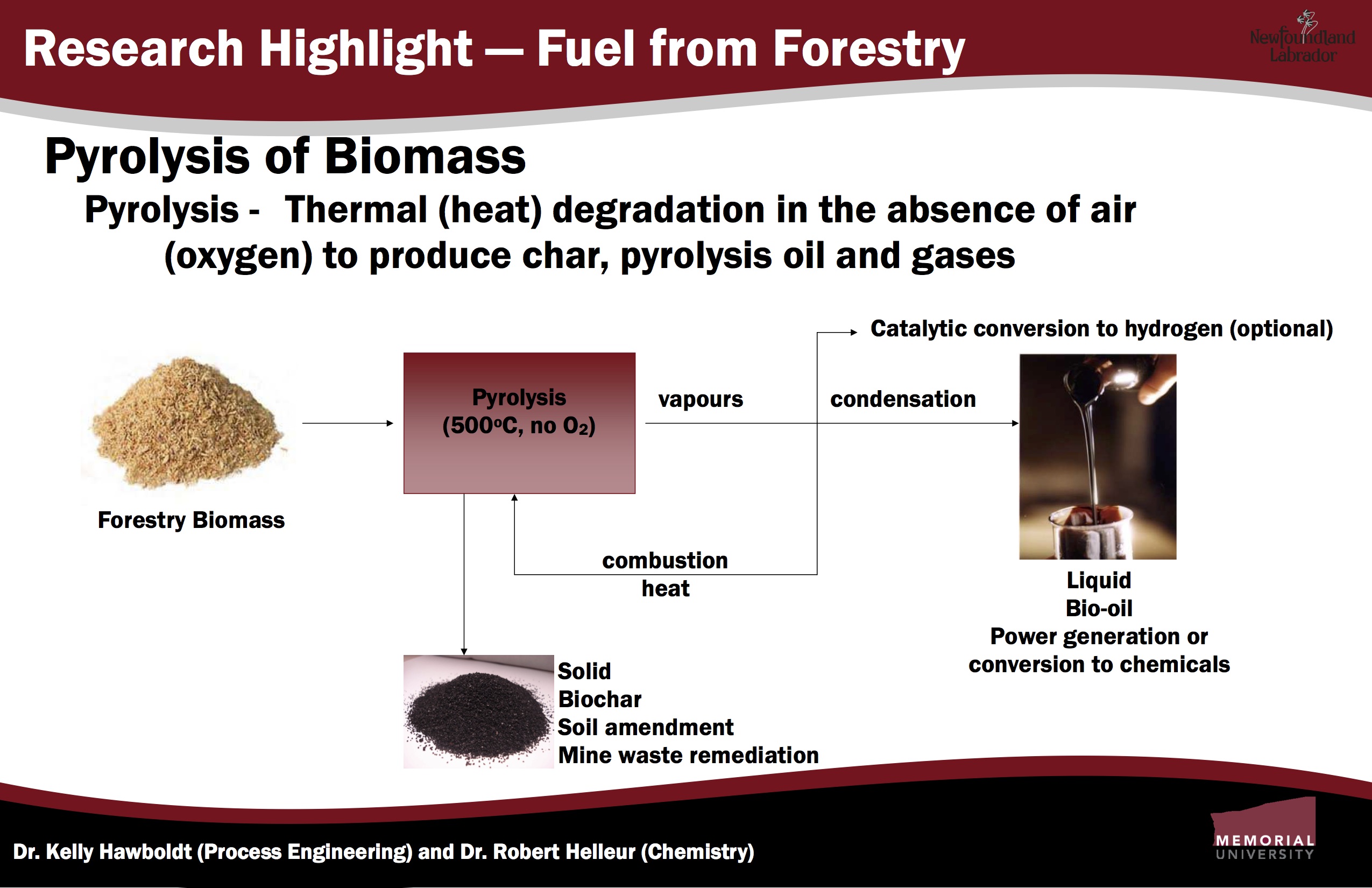Researchers find new uses for forestry residues
 Every spring the smell of red bark permeates campus as landscapers begin the annual task of weeding and tidying up Memorial University’s flowerbeds.
Every spring the smell of red bark permeates campus as landscapers begin the annual task of weeding and tidying up Memorial University’s flowerbeds.
But two researchers are trying to find other, more valuable, uses for the residues left behind from the province’s lumber and pulp and paper industries. Drs. Kelly Hawboldt and Robert Helleur are professors with the Department of Process Engineering, Faculty of Engineering and Applied Science, and Department of Chemistry, Faculty of Science, respectively.
Five years ago the pair met with provincial forestry employees and offered their expertise and the techniques they’ve developed to utilize forest residues such as sawdust, shavings and bark.
“The principle aim of our work is to develop biofuels production in remote or limited infrastructure regions where there is an abundance of feedstock, but a limited ability to transport or store residues,” said Dr. Hawboldt.
Working with Stephanie MacQuarrie, an assistant professor with Cape Breton University’s Department of Chemistry; industrial partner Dr. Peter Fransham, vice-president of research at ABRI-Tech Inc.; and a large number of graduate and undergraduate science and co-op engineering students, the team received funding from the Department of Natural Resource’s Centre for Forestry Science and Innovation (CFSI) to undertake an inventory of pulp and paper mill and sawmill residues in the province.
Additional CFSI funding in support of an important BioFuelNet Canada grant, allowed the researchers to discover that pyrolysis was the best technology for this province to convert the materials to useful products. Pyrolysis is the thermal degradation of organic material at high temperatures in the absence of oxygen to produce biochar, bio-oil and gases.
Biochar is a charcoal-like substance used in soil amendment and remediation and as an inexpensive adsorbent for removing contaminants. Bio-oil can be used for power generation and for useful chemicals. The gases created can be fed back into the pyrolysis process to help power the chemical transformation, creating a self-sufficient system.
This spring another successful round of funding from CFSI and BioFuelNet enabled the team to optimize the performance of an auger pyrolysis demonstration unit ― purchased with Canada Foundation for Innovation and CFSI funds ― and to test various feedstocks.
“ABRI-Tech with help from Memorial and CFSI is completing a feasibility study to establish commercial pyrolysis plants in this province,” said Dr. Helleur. “The plant has to be large enough to process sufficient quantities to make it viable, but also small enough so it could be put on wheels and made mobile.
“A centralized facility would not work. This plant will be able to process 10 tonnes of feedstock a day, which is smaller  compared to some commercial versions, but it can travel to the source of the feedstock and potential users, rather than having them pay high shipping costs or dealing with stockpiling issues.”
compared to some commercial versions, but it can travel to the source of the feedstock and potential users, rather than having them pay high shipping costs or dealing with stockpiling issues.”
While the group is mainly focused on forestry residue, they say the system can also be used to transform municipal solid waste and fisheries waste through co-processing with forestry material.
“Much of the solid waste is recyclable in larger cities, but organic waste from smaller municipalities often has to be shipped a long way,” said Dr. Helleur. “Food scraps and other organic materials could be dried and processed with other material in our mobile unit.”
“We’re also looking at shellfish waste ― the shells ― as another crude feedstock that can be mixed with sawdust,” said Dr. Hawboldt. “No one has ever done that before, but what’s nice about it is the resulting biochar will have properties that make it a possible adsorbent for treatment of industrial effluents in mining and oil and gas and has many great nutrients for farming and gardening. Basically, we’re trying to look at all the angles when it comes to waste utilization.”